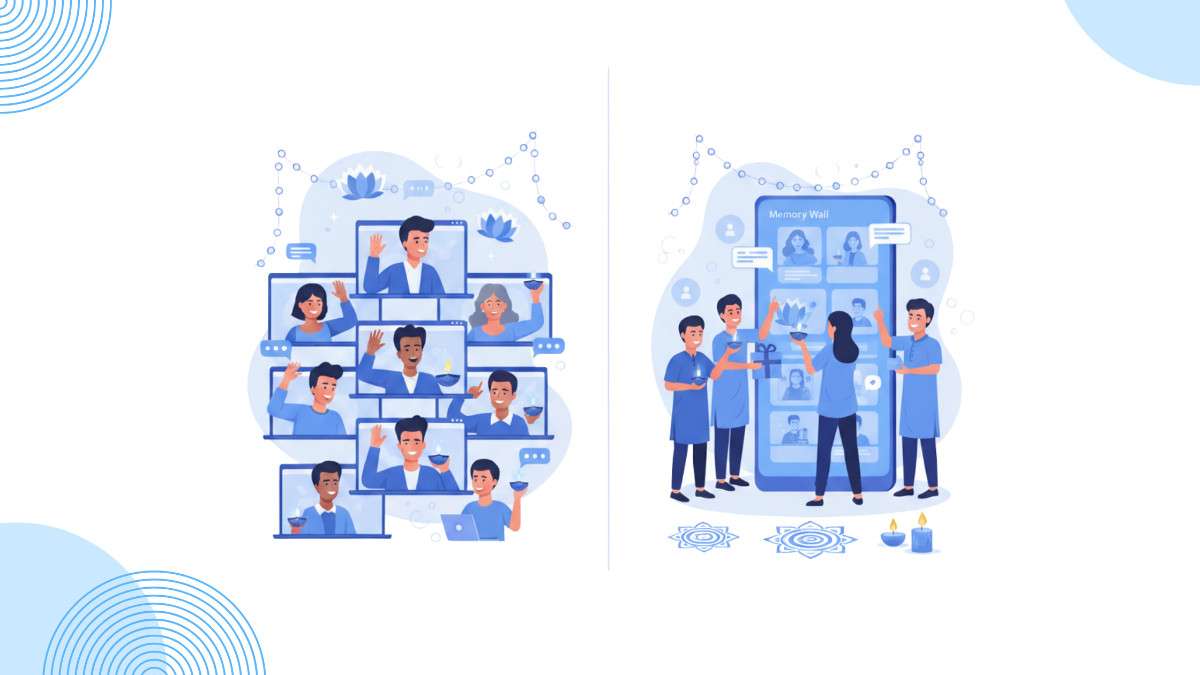Top Challenges Faced by Different Types of Association
Discover the biggest challenges each types of association faces—and why understanding them is crucial for success.

Associations play a crucial role in enabling the establishment of communities, industries, and professional networks. Any association type, however, encounters special challenges, depending on member expectations, financial conditions, as well as fast-paced technology development. Following is an analysis of the significant challenges confronted by different association types placed in real-world context and best practices to enable their mitigation.
Types of Associations & their Challenges
Associations vary widely in their purpose, structure, and membership, which means each type faces unique challenges. From nonprofits striving for sustainable funding to trade associations navigating industry regulations, the obstacles they encounter are shaped by their specific goals and environments. Understanding these distinct challenges is essential for association leaders to effectively address member needs, adapt to changing technologies, and ensure long-term success. Below, we explore the main types of associations and the key challenges that commonly impact them.
1.Professional Associations
Definition:
These are the groups of people who do particular jobs—e.g., medical doctors, engineering professionals, or teachers. Networking, education, lobbying, and certification are their major activities.
Critical Challenges:
Member Needs Shift:
Today’s members expect more than conferences every year. As an example, the American Medical Association added online certification courses and career development webinars to their mix of services, based on ongoing member feedback. Associations that collect and examine member survey data and engagement metrics regularly remain ahead of the curve by refining services to shift demands.
Personalization & Segmentation:
The one-size-fits-all approach to communications does not work anymore. The Institute of Electrical and Electronics Engineers (IEEE) carves its membership into career stage and specialization, providing personalized newsletters and activities that appeal to students, early-professional engineers, and experienced professionals as well.
Fatigue Engagement:
Too many emails and web events overwhelm members. The American Bar Association addressed this by clustering communications and prioritizing high-impact content, resulting in a reported 20% attendance increase at events and improved member satisfaction ratings.
Technology Gaps:
Legacy platforms slow down user experience and restrict digital interaction. As per a 2023 industry survey conducted by AssociationTech, more than 65% of professional associations identify legacy platforms as a key area that is slowing them down. Contemporary associations spend on mobile-enabled applications and social integrations to maintain members’ easy connections.
Recruitment & Retention:
Millennials and Gen Z workers demand transparent value and ROI. Companies like the Project Management Institute (PMI) deploy gamified learning and interactive mentorship initiatives, boosting new member enrollments by 15% year-over-year.
2.Trade Associations
Definition:
These groups are businesses within an industry, and their main work includes lobbying, industry customs, and overall business concerns.
Main Challenges:
Differing Member Interests:
Large corporations can lead the discussion, while smaller corporations cannot make themselves heard. Balancing differing interests with a common ground is an eternal tightrope walk.
Showing Concrete Value:
Unless there is hard evidence that advocacy, research, or networking generates quantifiable ROI, member firms will not hesitate to withdraw. Associations have to be constantly proving economic and strategic worth to constituents.
Economic Volatility:
Association budgets are likely the first to be slashed during economic downturns. Revenue diversification (e.g., training programs, sponsored research) can provide stability.
Industry Disruption:
Rapid policy, technology, and consumerism changes require associations to remain current. Having the ability to supply timely resources, market prognostications, and compliance information is central to remaining current.
3.Social, Cultural & Special Interest Associations
Definition:
They are groups that combine individuals bound by common hobbies, heritage, or causes—everything from a club based on music to cultural activist groups.
Main Challenges:
Volunteer Burnout:
With few staff members, such associations rely on a few dedicated volunteers. Without official support and identification, long-term commitment becomes not possible.”Volunteer Burnout
With few staff members, such associations rely on a few dedicated volunteers. Without official support and identification, long-term commitment becomes not possible.
Event Relevance:
Since interests and demographics of the members shift, the existing event frameworks might no longer remain relevant. Associations have to continuously update programming based on what members advise them and what is current.
Budget Constraints:
Low budget prevents the incorporation of fresh technology or providing more member benefits.
Lean operations and collaborative innovations can fill the gaps.
Leadership Turnover:
Volunteer leader turnover can undermine strategic planning.
Onboarding systems and written processes guarantee smooth transitions.
4.Nonprofit & Charitable Associations
Definition:
With conservation, education, or health equity goals, these associations are almost entirely dependent on donations, grants, and volunteer work.
Main Challenges:
Measurement of Impact:
Donors and stakeholders expect transparency. Associations need to provide transparent, data-driven outcomes to support funding and establish trust.For example, Charity: Water publishes regular detailed reports and interactive impact maps showing precisely where donations are being spent, and this has boosted donor confidence and repeat giving.
Volunteer Management:
Management of large, typically decentralized groups of volunteers takes training, technology, and regular communication. American Red Cross employs advanced volunteer management software and frequent virtual check-ins to maintain their staff highly coordinated and engaged, with volunteer retention at a minimum of 25% above average.
Sustainable Funding:
Competition for grants is high, and donor fatigue is a fact of life. Associations need to diversify revenue through recurring donor programs, corporate partnerships, or social enterprise endeavors.Groups like Doctors Without Borders have diversified their revenue through the creation of repeat donor programs and corporate sponsorships, more secure sources of revenue.
Regulatory Burdens:
Compliance with tax codes, reporting requirements, and ethical standards can be time-consuming, diverting from mission-related activity.For instance, the majority utilize advanced compliance software to facilitate filings and maintain ethical behavior in pursuit of their mission.
5.Alumni & Education Associations
Definition:
These organizations bring together alumni students or education professionals in the effort to build community, build networking, and assist with fundraising efforts.
Main Challenges:
Multi-Generational Engagement:
Communication needs to be tweaked to diverse tastes—everything from Boomers who love print newsletters to Gen Z alumni who are looking for online forums and instant feedback.For example, Harvard Alumni Association offers print newsletters for older generations while hosting active LinkedIn groups and Instagram pages to connect with younger alumni, successfully bridging the generational gap.
Donor Fatigue:
Constant requests without added value can estrange alumni. Building relationships with mentorship, career support prospects, or premium content can build engagement and philanthropy.
New Events:
Reunions or banquet events are not appealing anymore. Providing hybrid networking hours, virtual panels, and career workshops can engage alumni of any age.
For example, Jamia Hamdard University, one of India’s leading institutions, struggled to track its dispersed alumni base and lacked a centralized system for events and engagement. By partnering with AlmaShines, the university launched a digital alumni platform that quickly connected thousands of graduates and enabled its first-ever official alumni meet. This showcases how educational associations can overcome engagement and event-related challenges through technology-driven solutions.
Explore the full Jamia Hamdard alumni engagement case study to see how a digital alumni platform transformed connections across 6 schools
6.International Associations
Definition:
Transnational associations that bring together transnational members with common professional, scholarly, or cause-related objectives.
Main Challenges:
Cultural & Language Sensitivity:
Efforts at joining should honor regional traditions, languages, and communication styles. Localization is a key to active participation.For example, the International Federation of Red Cross and Red Crescent Societies (IFRC) offers multilingual resources and culturally adapted messaging to ensure inclusivity and active member participation worldwide.
Time Zone Management:
It is hard to plan webinars, meetings, and live events. Providing on-demand material and modifying meeting times can make global members active.
Equitable Access:
Associations need to provide members from developing nations an equal shot at leadership positions, training, and taking part in events.The World Health Organization’s global partnerships emphasize capacity building and inclusive representation to ensure equitable access and impact.
No two associations are the same, and within each category, there is a distinct set of new challenges. By finding these distinct dynamics and adopting strategic best practices—personalization, technology implementation, and outcomes-driven engagement—associations can stay relevant and future-proof in a more changing world.
Last Thought:
The future of associations depends on how well they can adapt, customize, and lead. Whether they are dealing with volunteers, managing budgets, or crossing time zones globally—deciding and solving your own unique challenges is the secret to sustainable growth.
By listening to members, remaining open to innovation, and remaining mission-focused, associations can remain relevant, effective, and indispensable for years to come.
Conclusion
The future of associations depends on how well they can adapt, customize, and lead. Whether they are dealing with volunteers, managing budgets, or crossing time zones globally—deciding and solving your own unique challenges is the secret to sustainable growth. By listening to members, remaining open to innovation, and remaining mission-focused, associations can remain relevant, effective, and indispensable for years to come. .
Frequently Asked Questions (FAQs)
This distinction helps in aligning investments with long-term goals and avoiding technical debt:
- Professional Associations: Unite people in the same profession (e.g., doctors, engineers) for networking, education, and advocacy.
- Trade Associations: Bring together businesses in an industry to address common business concerns and lobby for industry interests.
- Social, Cultural & Special Interest Associations: Focus on shared hobbies, heritage, or causes, such as music clubs or cultural groups.
- Nonprofit & Charitable Associations: Pursue goals like conservation, education, or health equity, mainly funded by donations and grants.
- Alumni & Education Associations: Connect former students or education professionals for networking and fundraising.
- International Associations: Gather members from multiple countries around professional, scholarly, or cause-related objectives.
Associations face many challenges: — Members want personalized, digital services. — Outdated technology limits engagement. — Recruiting and retaining younger members is tough. — Volunteers risk burnout. — Events must stay relevant to avoid fatigue. — Ensuring equal access for all members is vital. — Funding is threatened by economic changes and donor fatigue.
A community association could be a local cultural club, a neighborhood improvement group, or a special interest group like a music society. For example, a local gardening club that organizes neighborhood beautification projects is a community association.
No, people usually join multiple associations to meet their varied professional, social, and personal interests.
The American Medical Association is a well-known professional association; the International Federation of Red Cross is a key international association.
A group is any collection of people who interact, whereas an association is a formally organized group with specific objectives, membership rules, and often a structured leadership. Associations are purpose-driven and typically have official recognition and activities.
Suggested Blogs
Let’s discuss the idea
Join hundreds of companies transforming their corporate communities with Almashines






